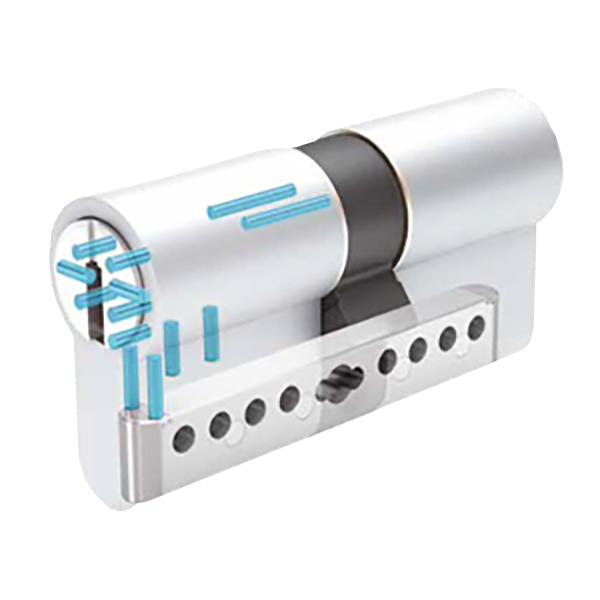Drilling protection
Different designations are possible: drill protection
One of the common methods of overcoming lock cylinders is drilling. To defend against drilling attempts with HSS (high-speed steel) drills, hardened pins, bolts, steel balls, sintered material and carbide inserts are very often inserted into the rotor in the front area of the key entry.
In the cylinder itself, sintered plates, steel rollers or similar difficult-to-machine steels and materials are used for this purpose.
These are arranged in such a way that when drilling is attempted, the drill bit breaks or is deflected in such a way that the cam (also known as the locking cam) cannot be reached and can be rotated using auxiliary means.
Cylinder bodys made of CrNi steel (e.g. KESO cylinder E14) offer considerable advantages due to their higher strength against drilling attempts. Coupled with the other protective measures, effective time delays in overcoming can be achieved here.
These cylinders offer the highest protection against drilling and extraction. In addition, they are suitable for arming systems. With carbide pins in both the rotor and body, they resist attack with carbide and HSS tools.

KESO cylinder 81.E14 according to VdS BZ(+)














